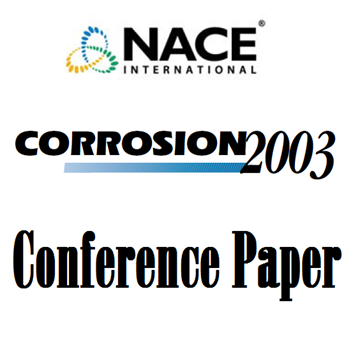Search
01028 BATCH INHIBITOR FILM DISTRIBUTION STUDIES: CORRELATION OF FIELD DATA WITH LABORATORY RESULTS
Also Purchased
03337 THE TRANSPORT OF CHEMICAL INHIBITOR DURING BATCH APPLICATION
Product Number:
51300-03337-SG
ISBN:
03337 2003 CP
Publication Date:
2003
$20.00
10272 Batch Corrosion Inhibitor Film Thickness Measurements Using Optical Profiler
Product Number:
51300-10272-SG
ISBN:
10272 2010 CP
Publication Date:
2010
$20.00
07693 High Performance Batch Treating Corrosion Inhibitor
Product Number:
51300-07693-SG
ISBN:
07693 2007 CP
Publication Date:
2007
$20.00




